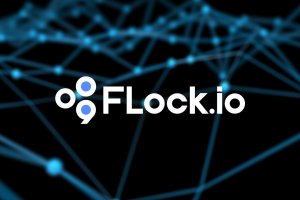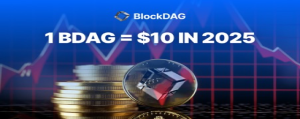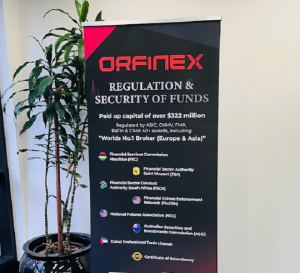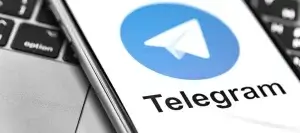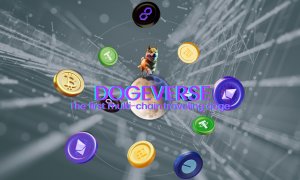A Wrapup of zkSync x Bitrue’s “Ask Me Anything” Session
In another edition of Bitrue’s AMA on Twitter Space, Bitrue invited a special guest from the company behind the creation of zkSync, Matter Labs. Marco Cora, Head of Business Development from Matter Labs, joined the session to give listeners a rundown on what’s up with zkSync.
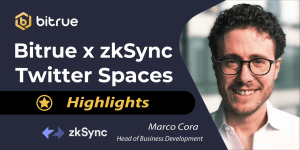
zkSync is a ZK rollup, a trustless protocol that uses cryptographic validity proofs to provide scalable and low-cost transactions on Ethereum. In recent news, Matter Labs has raised a monster $200 million to support the launch of its zkSync V2 rollup network, one of the major platforms vying for dominance in a crowded competition to reduce Ethereum’s fees and increase its transaction speeds.
As an early user and adopter of the crypto space, Marco started mining Bitcoin in its early days and even participated in the ICO of Ethereum. Because of that, it made perfect sense for him to join zkSync.
Without further ado, here’s a deep dive into the AMA session’s key takeaways. Below are the Q&As during the session:
Q1. As one of the scaling solutions for Ethereum, what problem exactly does zkSync solve, especially after The Ethereum Merge upgrade? Where does zkSync position itself after the upgrade?
zkSync solves the scalability trilemma. Generally, a chain has three properties: security, decentralization, and scalability. The fundamental problem in any monolithic chain is that the chain is trying to do too many things. Consequently, the chain ends up in a situation where it only prioritizes 1 or a maximum of 2 properties. Ethereum made a clear choice in its design to prioritize decentralization and security. Hence, scalability suffered. Today, Ethereum has a small number of transactions per second and finite block space. Because the market for block space is a free market, when there is high demand for that block space, transaction fees (gas fees) become too expensive. Consequently, it prices out a lot of users, arguably the more interesting ones. The overall system becomes less useful for everyone else as well.
How does a rollup solve this problem? It does so by moving the computation of the chain elsewhere, allowing optimization for a specific property; scalability. In zkSync’s case, the computation is moved off chain. The verification of the computation’s integrity and the calculation of the zero knowledge proof are also done off chain. Essentially, it has nothing to do with zero knowledge in the usual sense because it does not obfuscate or create any form of secrecy or privacy. Zero knowledge is used to compute a succinct, small proof confirming that all the transactions going in the block are valid. Then, this proof, along with all state differences and transactions, will be updated on-chain on Layer 1. The chain thus inherits the total security of Ethereum.
The mantra ‘Don’t trust, Verify’ remains core to zkSync. From a different perspective, zkSync changes the way Ethereum handles transactions by allowing only one node to verify all transactions at a time. This system creates a high level of security and decentralization but increases overhead too much. This results in a minimal number of computable transactions for the system. So, zkSync solved this by introducing a system where only 1 node is needed to verify all transactions at any time. Slightly more work is required to generate the zero knowledge proof. All other nodes can take these tiny proofs, and these nodes will verify if the proof is valid. It is impossible to create an invalid proof and so this releases a lot of computational capacity for the system. and as a result, scalability can improve more than Ethereum could otherwise.
Q2. Obviously, there are many other projects that provide a rollup solution for Ethereum. What edge does zkSync have compared to those that are currently available in the market?
A rollup solution can be done in two ways: an Optimistic rollup and a ZK roll up. In an abstract sense, a rollup is just a Layer 1 smart contract that is the custodian of all assets, maintains the system’s state on-chain, and has a mechanism to update the said state. Both Optimistic and ZK rollups possess the 3 properties mentioned above: security, decentralization, and scalability. The difference lies in how the state is updated.
In the Optimistic setup, the state is updated optimistically. The validator takes several transactions and pushes them on chain. A certain amount of time will pass, allowing anybody to prove that any of these updates were invalid or fraudulent during that time. If no proof is provided, the state is valid. It only rejects the batch if someone—not just a validator on the Optimistic Rollup, but any participant monitoring the rollup chain—submits a valid claim that the transactions are fraudulent (“fraud proof”). Optimistic Rollups rely heavily on trust and game theory. In general terms, there is an assumption that every aggregator will act honestly. The reason is that their bond they put up to validate transactions will be slashed if they act maliciously. The validators are stuck in a prisoner’s dilemma, forced to cooperate and operate to support the ecosystem. The downside of this approach is that: (1) it has a lengthy dispute resolution period of one to two weeks, resulting in an unsatisfactory user experience, and (2) it relies heavily on game theory.
Dr. Albert Einstein has a famous quote: “In theory, theory and practice are the same. In practice, they are not.” Optimistic Rollups assume that “one of n participants” is honest. This meant that as long as one honest network user could submit fraud proof, the rollup protocol would process transactions correctly. It also assumes that players are of rational minds and are profit maximizers. However, under many circumstances, it is simply not true. For example, profit-maximizing is not a government’s main agenda when they attack the chain. It is also not true that just anybody can provide fraud proof. When transactions per second become too high, an ordinary computer cannot process, verify, and prove all transactions. One can only blindly trust others on this without verifying.
In the ZK space, validity proofs are used instead. In comparison, it is a more difficult approach where everything must be proven valid before updating the state and block time. The zkSync v1, which is now 2 years old, takes about an average of 3 hours to generate the validity proof. Sometimes, it takes as little as 45-50 minutes, which is much faster than 1 to 2 weeks. zkSync intends to bring it down to single-digit minutes over the next year. The ZK rollup is also fundamentally safer because it does not rely on trust or assumptions made about the humans behind the system. It simply relies on the math that enforces the computational integrity of the block.
Other than that, ZK rollup is also open to fractal scaling or, in other words, hyper-chains, where a rollup is launched on top of another rollup. It is sometimes called Layer 3. With fractcal scaling, it is possible to process, verify, and prove unlimited transactions per second. The computational capacity is merely limited by the hardware used for the calculations. The optimistic rollup method simply cannot achieve that. ZK rollups are fundamentally safer, cheaper, faster, provide higher throughput, and optimize the user experience.
Vitalik Buterin’s paper mentioned that crypto-economic networks come in many flavors. For example, StarkWare is among the various flavors that ignore compatibility completely and maximizes performance. Its programming language is tailored for zero knowledge proofs. However, it’s an entirely different programming language. Applications deployed on Layer 1 – which happen to be the biggest applications in crypto that secure tens of billions of dollars of value – cannot be redeployed on their Layer 2 as they are.
Similarly, many on-chain tools that developers know and love cannot be used. The same situation applies to the users. For example, MetaMask and many other plugins more complex than MetaMask do not work. So, to take that approach, rebuilding the entire infrastructure of the Ethereum ecosystem is required. Despite already being live for a year, its ecosystem only underwent minimal growth, being the cost of choosing performance over compatibility.
Polygon, ZK VM, and Scroll, on the other hand, exhibit flavors slightly different from Vitalik’s paper. However, they are similar in practicality. A high degree of compatibility is favored while performance is forsaken. A rollup is better when it is more agile. If enough users migrate to rollups, there is a risk that Ethereum will not implement features designed for users and deemed useful by users, like account abstraction, PayMaster, and new dApps, for example. These features are not designed for rollups,who would become primary participants of Ethereum’s Layer 1.
zkSync’s approach focuses on a high degree of performance and compatibility. The average developers and users get the best of both worlds. zkSync allows seamless porting from Lз1 or any EVM chain onto zkSync. Most on-chain tools will also work out of the box. zkSync is also addressing issues for tools that do not work yet to ensure they do work before developers and users arrive. So far, MetaMask and 2 dozen wallets already support on-ramp and off-ramp migrations with centralized exchanges. From the users’ point of view, using zkSync is easy and will be no different than using any other favorite EVM chain of theirs.
Among various rollups, zkSync is the most aligned with the Ethereum ethos. In our recent announcement, we have just committed to making the entire code open-source and doing so very quickly for the public good. Any individual can fork it, view it, and amend it. As a company, it is a crucial, courageous, yet risky step. However, it is a huge leap ahead for the community, the users, and the protocol itself. zkSync’s alignment with Ethereum’s ethos drives the company and is the most important aspect and advantage that sets zkSync apart from competitors.
Q4. What is the current status of zkSync’s public roadmap, how is the team doing it so far with “not so good market situation”, and what are the plans for zkSync moving forward to at least to make this project afloat and stay-on-track?
zkSync is fully committed to plotting a reasonably predictable road map. zkSync is at the frontier of what is possible. There will always be events that arise and set the company back. However, zkSync has managed to deliver thus far. zkSync’s commitment to delivering a 100-day deployment on Mainnet was completed exactly on time. zkSync had always completed milestones on the roadmap within days of the promised deadline. So far, zkSync has met the expectations of the community.
zkSync remains untouched by the current debacle with FTX and has no material exposure to them, Alameda Research, or their affiliates. FTX is also not involved with zkSync or Matter Labs as an investor or through market making. Hence, the debacle does not directly impact zkSync or Matter Labs. However, the entire industry has been impacted indirectly. The respect and trust within the industry became broken.
On a positive note, those committed to building in crypto and large corporations interested in using blockchain are seen pouring into the space.
The recent round also puts zkSync in a position where the company can hire aggressively to grow stronger, tighter, faster, and to deliver more efficiently. The organization is growing across the board within Matter Labs. The hiring prioritizes filling in the headcounts for the engineering team. However, Matter Labs also seeks talent in Product, Marketing, Business Development, and Operations. Interested candidates may slide into Marco’s DMs or contact their recruiter.
zkSync 2.0 deployed on Mainnet on 28 October 2022. Currently, zkSync is in “Baby Alpha”, which is closed to users and projects. In this phase, security audits, bug bounties, Cod4rena, and many more are being carried out to make the system as safe as possible. In the next phase called “Fair Onboarding Alpha”, zkSync will open the protocol only to projects so that projects can deploy and test the entire infrastructure in peace. Finally, at the Full Launch Alpha, the protocol will become permissionless and open to all users. We believe it is a sensible approach to attract users for zkSync. In the following phases, zkSync will work on Layer 3, hyper-scaling, zkPorter, the Validium and Volitions infrastructure, decentralizing the sequencer, and decentralizing the prover. These will occur over the next year in various stages. Timely updates regarding the road map are provided on zkSync’s blog. The community will be informed and made aware of any delays or speed-ups. zkSync is fully committed to properly meeting community expectations.
Q5. With the launch of “Baby Alpha” in October and the full launch of Alpha Mainnet soon, what is the support that zkSync is already providing for developers, and what plans are there to improve or even onboard more developers into the ecosystem?
zkSync provides engineering support to the developers by taking an active role in designing the system. ZK offers a slightly wider design space, and zkSync knows how this benefits projects. Developers who wish to reach scale on ZK rollups may reach out to Matter Labs and have a conversation with the development team and the developer relations team. Any questions developers may have, albeit technical questions or questions about the architecture of their infrastructure, can be directed to them.
Additionally, zkSync has a relatively large ecosystem at present, with over 150 projects committed to deployment. These projects are registered on zkSync’s microsystem page. About 100 projects have already deployed on zkSync 2.0 testnet and are ready to go on Mainnet. In a composability game, everyone should want to be connected. zkSync can bridge these connections internally between developers and targeted teams, general groups of projects, or even investors within zkSync’s ecosystem.
The community should also stay tuned for the ecosystem development infrastructure with grants and investments that zkSync has been working on. That will be launched very soon.
Q6. A little peek in the Matter Labs’s recent post about the current roadmap. One phase before “Decentralization”, I saw the word Layer 3 Proof Of Concept: Opportunity. The wording sparks an interest for me and also for our community, especially the “Opportunity” part, can you explain briefly about it?
zkSync’s Head of Engineering originated from SpaceX. The word ‘Opportunity’ was borrowed from the names of rockets that have been sent to space. That name was chosen to pay homage to that heritage. zkSync thinks that Layer 3 is the general answer to the discussion around SNARK chains in the crypto native world. There had been numerous discussions around projects that are designing their own chain, independent from other chains. The most prominent example is dYdX which had recently forked using Cosmos SDK (they created a fork of Cosmos to deploy their own private chain).
However, there are 2 huge problems with this approach. Starting your own chain meant that, the owner would have to guarantee its security, and proof of stake (PoS) will be strictly limited by the total FTV of the native token. In comparison to Ethereum, these numbers are relatively small. The second problem is that the owner will have to design, deploy, maintain and defend a non-native bridge. Over the past year and a half, 80-90% of hacking incidents and almost 30-40% of the entire amount of hacking incidents in the entire history of blockchain happened from hacking bridges. This democracy sword will always stay on top of you if you decide to start your own blockchain.
Instead of starting a separate chain, one can choose to join zkSync and deploy on Layer 3 as a project while inheriting the security of Ethereum. At zkSync, you will be embedded into Ethereum as a smart contract. Hence, you will have a native bridge. This is a much safer way of interacting and connecting yourself with other components of the Ethereum ecosystem.
Layer 3 is also the answer to all the discussions about private chains similar to Corda, Hyperledger, etc. Many large enterprises interested in blockchain do not really make it on chain due to requirements that are inapplicable to a general chain designed to suit everybody’s needs. Large enterprises prefer customizability and the ability to close the chain (maybe restricting it to only their users). They also question whether the chain has high performance. All of these qualities were not possible up till today. Layer 3 will make it a reality.
zkSync is actively advocating for this concept and has carried out a lot of research for it. Layer 3: Opportunity is an experiment that zkSync will run on-chain, visible to everybody. From there, zkSync plans to learn a lot about L3. zkSync has been in touch with a number of large players and protocols in the crypto native space and some large enterprises, having conversations about running their own Layer 3: Opportunity testnet for them. These conversations help zkSync understand their design needs. zkSync aims to achieve that by the end of Q1 or early Q2 2023.
Q7. This question is coming from our community and it mentions security. It says “Security is the most important thing to consider when starting up a project or partnership, how secure is this project for users and investors? Because, there’s been a lot of hacking issues. Can we get information about your security system?
zkSync considers security as the #1 thing that needs to be executed correctly. Although zkSync is pretty secure, it is still a L1 smart contract. Like every smart contract, it is subject to the possibility of having bugs. zkSync is doing everything possible to eliminate as many of them as possible. However, the general advice is that at the very beginning, one should not consider zkSync to be super secure and only a very small portion of user assets should be deployed on it in its initial phase. Due to a smart contract’s immutability, by accumulating more and more property, it becomes more and more secure, and more and more time will pass without anybody being hacked eventually.
First of all, zkSync had been carrying out security audits, performed by 2 Tier-1 audit firms. OpenZeppelin was the first audit firm to be announced and the other will be announced shortly.
Secondly, zkSync also has a series of bug bounties that will aid identifying problems and issues with the chain. This includes zkSync’s Code4rena program and immunity program, where zkSync will deposit assets on the chain to attract hackers and observe whether they can break in. Once zkSync has accumulated a high enough security level, the protocol will be opened to partners. Hopefully, they will identify more bugs. zkSync will then open to users after this process.
zkSync will also partner with a third-party institutional custodian, allowing users with large amounts of cryptocurrencies to securely custody their assets. There are cryptocurrencies domiciled and denominated in zkSync. Customisation is possible for users who wish to do so.
Security is a top priority for zkSync, and the team is working hard to make the system as secure as possible for users. However, the system should not be considered completely secure on its launch day, and the community should wait a while before depositing large amounts of money in it.
Q8. The next question is also coming from the community. It says “Marketing and partnership is a very essential element and it has become one of the key tools for projects to communicate to its community. What is your take on this comment, and what are zkSync strategies to maintain good communication with its users and investors?
zkSync had been diligently researching this sector in hopes of attaining the freedom that comes with blockchain for a billion people. This will improve the people’s ability to have self-sovereignty. To achieve that, zkSync needs to ensure that projects are aware of what we are doing, and have information about how they can deploy. zkSync needs users to be aware of what the company stands for, the security properties of the system, and why users should choose zkSync over other protocols.
From a business development point of view, zkSync has been putting in a lot of legwork. Numerous conversations with a lot of projects have been carried out to ensure that they understand what zkSync is doing, what zkSync stands for, the ETAs, etc. In exchange, zkSync learns the requirements that need to be on chain for them during deployment to satisfy them and be open to partners.
On the marketing side, zkSync has been relatively low-key up till a few months ago. zkSync has always been a conservative firm and the conservative approach wins it all. zkSync is not a sprint, but a marathon. Getting blockchain into the hands of a billion people is not a feat that can be done in 3 or 6 months. zkSync’s road maps and thinking is always a multi-year process.
However, zkSync has decided that it is the right time to be more present with its marketing. For example, zkSync is now more present on Twitter with its communication, which increased its user base significantly. zkSync will also start organizing events like hackathons. This will lead to a much higher degree of awareness for zkSync’s brand.
We are currently comfortable with its current extent of marketing and business development. We’ll continue to figure out the right mix and eventually carry things out with a more systematic approach.
Q9. We saw what happened with the misconduct and failure of supervision by exchanges and even projects in the crypto space. Will there be an effort from zkSync to prevent this from happening for example through system auditing and other preventive options to create trust to its user and community?
Fundamentally, FTX’s problem was a traditional finance problem. They were moving very far away from being on chain, leading to fraudulent issues.
zkSync, however, is all about being on-chain, verifying, and not blindly trusting. It is impossible to have fraud in a system similar to zkSync. The smart contract executes instructions exactly as it is designed to. Many instances of fraud occurring in smart contracts are due to users not verifying. zkSync would like to eliminate that as much as possible.
zkSync will eventually become permissionless. We will not be able to stop people from using zkSync even if we wanted to. Actively seizing and eliminating the possibility of fraudulent acts will be impossible. zkSync took a different approach where they have invested a lot of effort in creating many tools that enhance the system’s safety. For example, today when a user is signing a transaction on MetaMask, the user is usually signing a blinder transaction that shows a blob of data that is not known of its exact intended use. When signing a transaction zkSync v1, users can see that zkSync took an effort to use a special signature type that allows zkSync to actually tell users what they’re signing in plain text, allowing users to read what’s going on. This is viewed as a huge improvement in security, making it much more difficult for users to be exploited. This allows users to protect themselves better.
We are trying to take as many steps as possible to ensure that users are educated about what’s happening and what could go wrong. We intend to partner with entities that provide on-chain security to users as well. For example, a set of plugins that can be installed on a browser to alert a user if there is malicious activity associated with a specific smart contract. We want to ensure that these are available on their website, are easy to install, and are totally compatible with zkSync.
Finally, we plan to fully utilize our social presence and be very proactive in highlighting users of any scams, fraud risks, and other shady activities. zkSync wants the community to be as safe as possible.
TL;DR, zkSync will try its level best to make the system very safe but once it goes permissionless, zkSync cannot stop people from using it. On the other hand, zkSync plans to quickly alert the community regarding any problems that are happening on zkSync. Finally, zkSync also intends to partner up with third parties that design software and tools for users’ on-chain self-defense.
Q10. We are almost at the end of our session. The final question will be what are the channels where people can follow zkSync’s latest announcement so that we won’t miss anything about the project?
The best way to follow zkSync is on Twitter (@zksync). Users who like to socialize may also join zkSync’s Discord channel. The community managers do a fantastic job in engaging the users and answering any questions.
Developers and partners may opt to DM Marco or zkSync directly on Twitter so they can get immediate support from the relevant departments. On zkSync’s official website, zksync.io, there is a section where users can find various email addresses. Users will then be automatically routed to the right people. We are always here, always super interested to hear from the community, and always open to feedback.
Click here to join zkSync’s Telegram channel and here for their Telegram channel dedicated to announcements.
Join in discussions on Reddit via r/zkSync.
Conclusion
zkSync believes Layer 3 is the endgame for blockchain in the medium to long term because L3 allows high degrees of scalability, composability, security, and customizability for large projects. Designs can be tailored to better suit their requirements.
This will push Ethereum into a new space where it will be really appealing for not only individual users but also large companies. There are many ongoing conversations regarding the shift of some of these businesses’ logic on-chain. It will be a momentous shift, one that is extremely important and one that will propel the entire ecosystem forward.
Today, we live in a system where individuals can collaborate without needing intermediaries, which is fantastic. It is the greatest innovation that crypto has brought into the space. Once large corporations start adopting the chain, it will truly become mainstream. Blockchain will then become an integral part of our life as the internet is. We are merely a few years away from that tipping point, where everybody would need to have a blockchain strategy and a blockchain team. Corporations will need to move a large portion of their business logic on chain to avoid turning obsolete. For everybody who is an early user, adopter, or pioneer, this inevitable transition is incredibly exciting.

